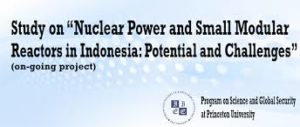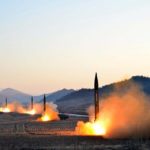
Professor Ramana explores the likelihood of Indonesia constructing Small Modular Reactors (SMRs).
RESEARCH APRIL 26, 2017 | BY M. V. RAMANA BERNADETTE K. COGSWELL, NATALIAWATI SIAHAAN, FRIGA SIERA R, AND RICHARD TANTER
Nuclear Power and Small Modular Reactors in Indonesia: Potential and Challenges
Bernadette K. Cogswell, Nataliawati Siahaan, Friga Siera R, M. V. Ramana, and Richard Tanter
Indonesian Institute for Energy Economics and Nautilus Institute for Security and Sustainability
April 2017
Find the report here.
Abstract:
Indonesia has been interested in building nuclear power plants since the late 1950s under the aegis of Badan Tenaga Nuklir Nasional (BATAN, the National Nuclear Energy Agency). Since the turn of the century, BATAN has been actively interested in a new class of nuclear power plants, small modular reactors (SMRs), that are being designed, developed, and advocated by some sections of the nuclear power industry as a way to address some of the challenges confronting the expansion of the technology.
BATAN’s interest in SMRs is propelled by reasons that pertain to nuclear power in general, such as low levels of electricity consumption among the population of Indonesia, growing energy needs, and claims about a lack of alternate means to meet these needs, and reasons that are specific to SMRs, such as the presence of remote areas and small islands that do not have the demand level to support construction of a large nuclear reactor, and the lower financial cost of SMRs. BATAN has explored a number of possibilities, including importing a small floating power plant from Russia, an SMR from Korea that can also desalinate ocean water, and a high temperature gas cooled reactor from Russia.
BATAN has conducted a number of nuclear power plant siting studies, including follow-up technical and economic feasibility studies in some cases. These studies have also included some SMR possibilities in much greater detail. But apart from an experimental power reactor (EPR), none of the other proposals has advanced towards actual construction.
Indonesia has an extensive network of government agencies involved in the energy sector and, hence, holding a stake in the nuclear power debate, as well as an extensive body of laws and regulations that could affect the eventual implementation of commercial nuclear power. The potential for adoption of SMRs in Indonesia is affected by a number of regulations, including the requirement that locally made components or services conducted by domestic providers have to be used in energy infrastructure, the requirement that only reactors based on “proven technology” will be licensed, and a requirement that reactors be sited only on land.
Another reason that Indonesia might not choose to construct an SMR is that, as we show through calculations, the cost of generating electricity using SMRs will likely be greater than large nuclear power plants as well as solar photovoltaic plants. Studies testify to the large potential of solar energy in Indonesia and the government has been adopting policies that promise to accelerate the construction of significant amounts of solar capacity.
Because SMRs have lower power capacity, producing the same amount of electricity using these as opposed to large reactors would require dealing with public resistance at many more sites. Public opposition has played a major role in stopping construction of nuclear power plants so far. As a result of all these factors, it would seem that the construction of SMRs is unlikely, especially in large enough numbers to make a sizeable contribution to Indonesia’s electricity generation.


